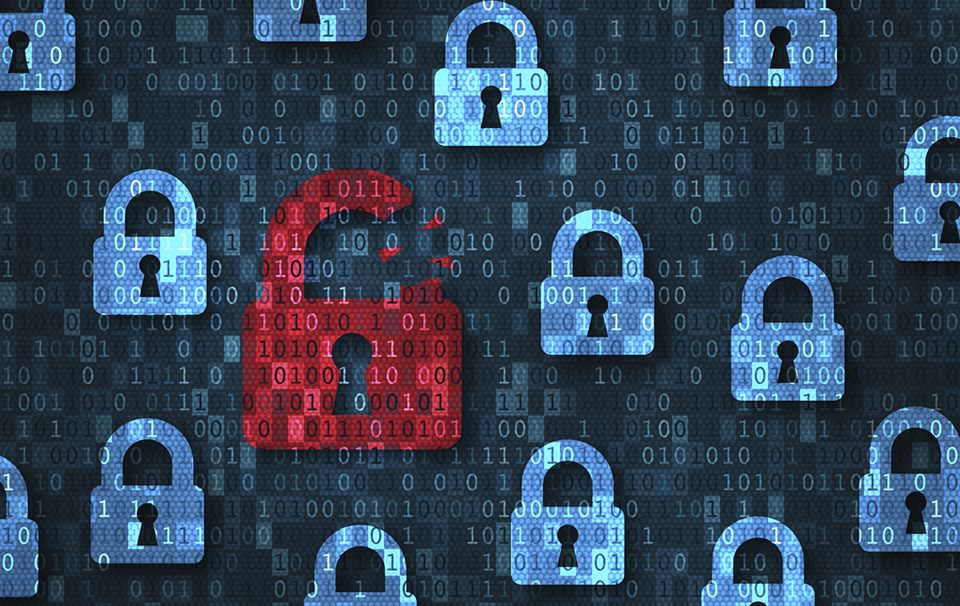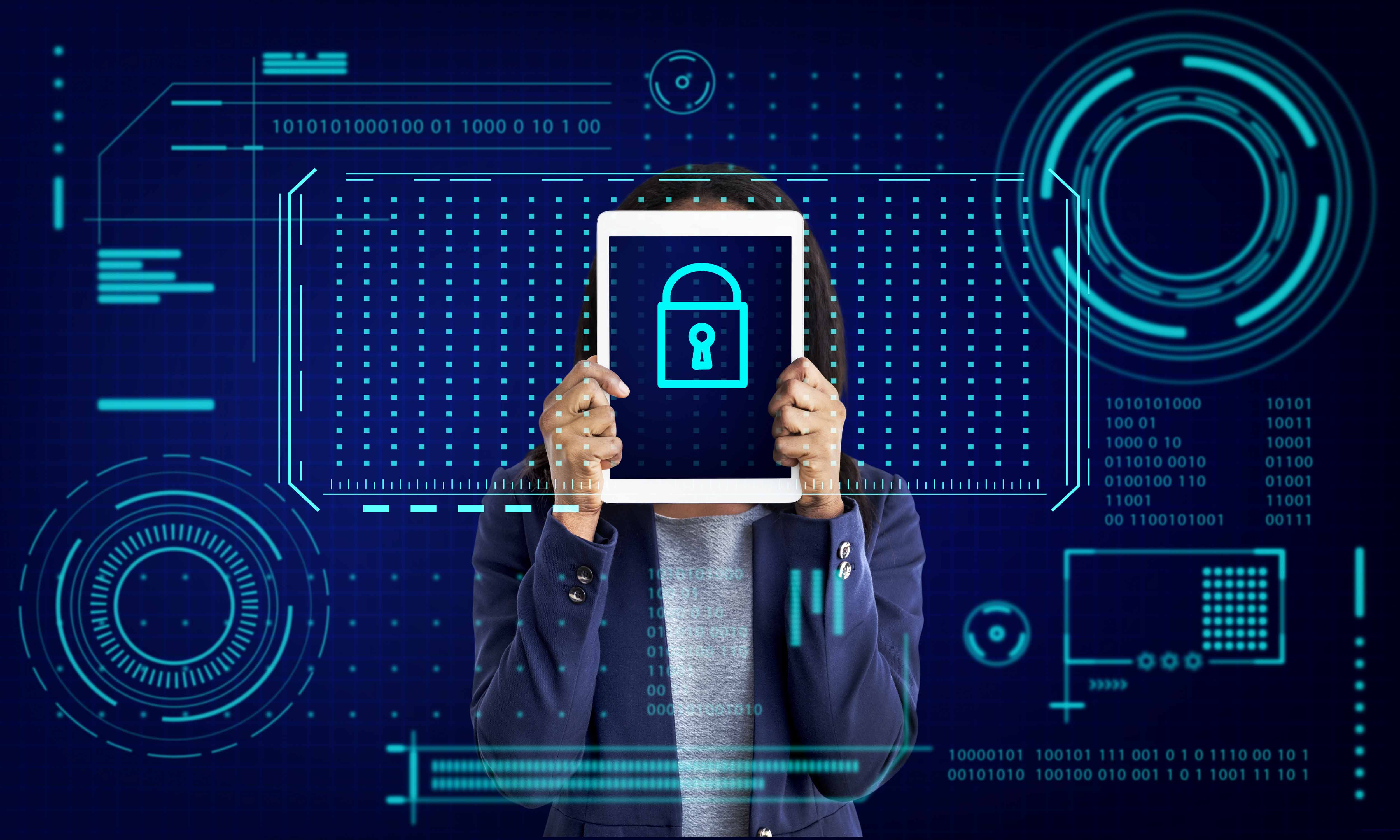
por Rebeca | Feb 1, 2023 | Ciberseguridad

The first step in fixing any IAM problem is to understand it. basically Common mistakes or risk of a data breach.
IAM is the information technology security framework of policies that ensures the right users have the appropriate access to the resources they need to do their jobs well. basically It requires managing the lifecycle and roadmap of your users’ identities, governing their access, and properly monitoring the use of their identities and credentials through identity analytics.
Effective IAM ensures that adequate controls are in place to control the ability of users to interact with critical systems, for which they require «privileged» access basically the basis of Privileged Access Management (PAM).
But this isn’t the only way threat actors find security gaps, which is why businesses must avoid the most common identity and access management (IAM) mistakes.
The most common IAM mistakes:
- Poor or partial IAM implementations
- No clear IAM governance results
- No executive leadership team “buy-in” or clear guidance for employees.
- A lack of skilled cybersecurity experts as IAM engineers, architects, and managers.
- Multiple systems of record with duplicate identity credentials.
- Political infighting over data and application ownership or responsibility.
- A lack of organizational change management processes to resolve issues and stay ahead of hackers’ latest tactics.
- A fear of automation, causing a reliance on risky, time-consuming manual processes.
- Uncleaned data lifted and shifted into new IAM systems.
- Unrealistic IAM roll-out basically approaches that aren’t effective.
And above all, identity security should never rely on the CISO or CIO to manage and communicate. All business leaders must share the same strategic vision around IAM and drive it within the organization to succeed also including the CEO, CFO, and COO.

Common mistakes or risk of a data breach
Don’t wait until it’s too late to fix the problems in your IAM strategy, and get ahead of the curve by fixing the easy mistakes you’re making today.
Shall we talk?
Sources:
(1) Spiceworks
(2) Computerweekly
Image: Kris in Pixabay

por Rebeca | Dic 7, 2022 | Sin Categoria
Cybersecurity Trends in 2023

According to a report recently published by the insurer Hiscox, but cyberattacks in Spain have an average cost per company of 105.000 euros, almost double compared to 2020, which was 55,000 euros. The cost per company reaches, on average, 78,000 euros worldwide.
The reputational damage must be added to the economic cost. Becouse a security breach can cause reluctance or fear among users but clients when hiring their services.
Today we share the trends in cybersecurity in 2023.
Cybersecurity Culture
Businesses will continue to fight phishing, ransomware, and DDoS. Remote work is here to stay, along with the security risks that come with it. Unshielded home networks, untrained employees, and the absence of a cybersecurity culture. Will pose a serious threat to organizations unless they take the proper precautions. A new geopolitical reality. The ongoing war, coupled with the energy crisis, may result in attacks on critical energy infrastructure.
Security Practices improvement
 The CISO is responsible for setting the strategy, additionally cannot implement that strategy if there is no buy-in from other areas of the organization. It is up to the members of each department to apply the controls that the security team recommends or requires. This disconnect between the expectations of the security team and the actual implementation is where things fall apart. In 2023, organizations will look another to solve this problem and place more departmental emphasis on implementing security best practices.
The CISO is responsible for setting the strategy, additionally cannot implement that strategy if there is no buy-in from other areas of the organization. It is up to the members of each department to apply the controls that the security team recommends or requires. This disconnect between the expectations of the security team and the actual implementation is where things fall apart. In 2023, organizations will look another to solve this problem and place more departmental emphasis on implementing security best practices.
Zero-Trust Architecture
Businesses will address ransomware threats from several ways, from improving cyber skills by working with the security team, to the right security tools such as multi-factor authentication, and training courses. Zero-trust architecture investment to validate access and improve security will increase.
Transparent Cybersecurity with customers
The way companies interact and communicate with their customers will. Need to change in 2023 as the public becomes increasingly aware of ransomware threats and data privacy issues.
As data breaches become increasingly public, rather than trying to downplay or hide the incident, organizations will need to admit the problem and provide details about the steps they are taking to mitigate the problem and prevent future breaches.
Visibility and security of connected devices
Leading organizations will target connected device cyber practices by establishing or updating related policies and procedures. Updating inventories of their IoT connected devices, monitoring and patching devices, refining device acquisition and disposal practices with security in mind , correlating IoT and IT networks, monitoring connected devices more closely to further secure those endpoints, manage vulnerabilities, and respond to incidents.
Supply chains threats
Today’s hyper-connected global economy has led organizations to rely heavily on their supply chains, them threats evolving in complexity, scale, and frequency, so organizations will continue the drive to innovate and mature their transformation capabilities. risk and security.
Organizations are focusing on implementing and operating identity and access management (IAM) capabilities. But trust is at zero that they enforce authorized third-party access to systems and data, and reduce the consequences of a compromised third party.
Shall we talk?
Fuentes:
- Spiceworks.com
- Venturebeat.com

por Rebeca | Oct 6, 2022 | Ciberseguridad, Recursos
Identity and Access Management (IAM) helps ensure that only authorized people have access. No one else, have access to the technology resources they need to do their jobs.
Due to the COVID-19 pandemic, many companies have grown uncontrollably. So no longer have enough time and resources to control and manage the access that each user should have to carry out their daily activities. This has created gaps in security that can be disastrous for companies.
This is why managing the life cycle of identities is so important. Since it allows establishing an identity governance model focused on the needs of each company. Likewise, being able to automatically manage tasks such as the creation, deletion, modification and auditing of users. All in the respective applications used in companies.
Why is so important IAM?
Today, nearly 100% of advanced attacks rely on exploiting privileged credentials to reach a target’s most sensitive data and applications. If abused, privileged access has the power to disrupt your business. In the face of these modern threats, it is clear that identity has become the new security battlefield. An “assume breach” mindset, based on Zero Trust principles, is absolutely essential. But while cyberattacks are inevitable, the negative business impact is not.
Keep your company safe with the help of a Security and Identity Management strategy
Organizations that apply identity management avoid vulnerabilities derived from improper access by users or the appearance of orphan accounts, among others; that, in short, allow access to the organization’s systems by users who should no longer be able to do so for different reasons. A good identity security strategy is based on the principle of least privilege, whereby users are given only the minimum levels of access necessary to perform their job functions.
The principle of least privilege is generally considered a cybersecurity best practice and is a critical step in protecting privileged access to high-value data and assets.
key benefits of identity management for businesses
Identity access and management is useful in many ways, because it helps you ensure regulatory compliance, promotes cost savings and simplifies the lives of your users, due to the improvement of their experience. These are the main benefits of having an IAM solution:
- Easy access anywhere
- It favors the connection between the different parts
- Improve productivity
- Optimize User Experience
Do you want to keep your company safe?
Picture: Imagen de Freepik

por Rebeca | Dic 15, 2021 | Ciberseguridad, Recursos

secure single sign-on solution
The sheer number of tasks we do online grows every year as we create and discover new opportunities to digitize our world. This is true within the workplace as well, but as we find more processes to automate using cloud-based technology and new apps to improve efficiency, we add more risk to the organization. Each tool added to the technology toolbelt, each interface users enter a password on, each app that we connect to via different networks and devices — they all add to our existing attack surface and present bad actors with seemingly unlimited avenues to cause harm if left unchecked.
This is where a secure single sign-on solution comes into play — using one reinforced set of credentials to access all of these tools and resources provides quite a few different benefits to modern organizations. SSO reduces the number of attack vectors your organization has, and SSO layered with multi-factor authentication (MFA) creates useful security and compliance controls. So, how do you find a solution that provides these capabilities and more? The answer is simple — look for an integrated, holistic directory platform that focuses on security and productivity.
Implementing an integrated directory solution provides organizations with a single source of truth for identity management and user authentication while providing built-in SSO and MFA capabilities and more. This is an important step to take to mitigate the risk that is inherent when users have to create and input different credentials across a wide variety of tools and resources, thus creating many unnecessary new attack vectors ripe for the taking.
How do businesses ensure they benefit from the convenience of single sign-on without compromising security?
The risk in SSO exists only if you see SSO as a means to gain access. But by recognizing the inherent security gaps that exist, and compensating by implementing additional controls in the form of multi-factor authentication, contextual access security and session management, you effectively reduce SSO risk, making it a source of elevated productivity and security.
Working in IT is a constant battle to find the perfect balance of security and productivity. This is no better personified than in the need for Active Directory (AD) users to access multiple systems through the use of Single Sign-On (SSO).
SSO solutions
Eliminate the need for users to remember a unique, complex password for each application and platform they access, replacing it with a single logon facilitating access to multiple systems and applications.
Offering faster access times to applications, with reduced password requirements (usually, one), it’s a no-brainer technology that reduces administrative overhead and support costs, while being a non-disruptive technology with a high adoption rate.
It also does come with some security benefits: Since SSO only utilizes a single credential it often equates to requiring a very complex single password. Additionally, the act of disabling access enterprise-wide becomes as simple as disabling the initial account. But, as with any technology designed to improve productivity; there are often losses on the security side. And in the case of SSO, there are some implied security risks.

Single sign-on is an authentication process that allows users to securely access multiple related applications or systems using just one set of credentials. Ideally, once SSO has been set up, employees or customers can sign on just once to gain access to all authorized apps, websites and data from an organization or a connected group of organizations.
SSO works based on a trust relationship established between the party that holds the identity information and can authenticate the user, called the identity provider (IdP), and the service or application the user wants to access, called the service provider (SP). Rather than sending sensitive passwords back and forth across the internet, the IdP passes an assertion to authenticate the user for the SP.
Your trust and data security are our priority
Our focus is on delivering value to our customers through high quality software which is robust, scalable, secure and ready for use 24/7. Soffid will never compromise on the privacy of our users and the security of our platform and product suite. Our team are technology purists who believe in strong encryption, tight and robust privacy controls. We believe in our software so much, we use it ourselves.
Single sign-on (SSO) has been prevalent in many organizations for years, but its importance is often overlooked and underappreciated. With many enterprises moving to the cloud and taking advantage of third-party services, seamless access to multiple applications from anywhere and on any device is essential for maintaining business efficiency and a seamless customer experience.
Single sign-on’s main purpose is to give users the ability to log in to individual apps and resources within a trusted group using a single set of credentials. This makes it much easier for the user, who doesn’t have to sign on multiple times, and more secure for the business, since there are less opportunities for a password to be lost, stolen or reused.
What are the Benefits of SSO?
Your employees and customers probably don’t like memorizing many different credentials for multiple applications. And if your IT team has to support multiple apps, setting up. Switching and resetting passwords for users requires countless hours, IT resources and money that could be spent elsewhere.
Increased Productivity
Single sign-on increases employee productivity by reducing the time they must spend signing on and dealing with passwords. Employees need access to many apps throughout their workday; and they have to spend time logging in to each of them. Plus trying to remember which password goes to which, plus changing and resetting passwords when one is forgotten. Technology the wasted time adds up.
Users with just one password to access all of their apps can skip all that extra time spent logging in. They also won’t need password support as often; and SSO solutions often give them access to a handy dock where all their apps are at their fingertips.
Improved Security
with good practices, SSO significantly decreases the likelihood of a password-related hack. Since users only need to remember one password for all their applications; they are more likely to create solid, complex and hard-to-guess passphrases.
They are also less likely to reuse passwords or write them down, which reduces the risk of theft.
An excellent strategy to provide an additional layer of security is to combine SSO with multi-factor authentication (MFA). MFA requires that a user provide at least two pieces of evidence to prove their identity during sign-on; such as a password and a code delivered to their phone.
Risk-based authentication (RBA) is another good security feature; in which your security team uses tools to monitor user behavior and context to detect any unusual; behavior that may indicate an unauthorized user or cyberattack. For example, if you notice multiple login failures or wrong IPs, you can require MFA or block the user completely.
A recent study by Gartner reveals over 50 percent of all help desk calls are due to password issues. Another study by Forrester reveals password resets cost organizations upward of $70 per fix.
The more passwords a user has, the greater the chance of forgetting them; so SSO drives down help desk costs by reducing the number of required passwords to just one and some organizations. Have been implementing specific password requirements like length and special characters; that may make passwords more difficult for users to remember—a trade off of more secure passwords for more password resets. SSO can help alleviate some of those costs.
Improved Job Satisfaction for Employees
Employees are using more and more apps at the workplace to get their jobs done; and each third-party service requires a separate username and password. This places a lot of burden on workers and can be frustrating. Notably, an average of 68 percent of employees have to switch between ten apps every hour.
Only having to sign on once improves employee productivity, as discussed above; but it also enhances their job satisfaction by allowing them to work without interruption. Quickly access everything they need, and take advantage of all the useful third-party apps that make their jobs easier. Easy access is particularly valuable for employees that are in the field or working from multiple devices.
Sources:
(1) Solution Review
(2) IT News
(3) GovInfoSecurity
Picture: <a href=’https://www.freepik.es/fotos/tecnologia’>Foto de Tecnología creado por DCStudio – www.freepik.es</a>

por Rebeca | Dic 1, 2021 | Ciberseguridad, Noticias, Recursos
On November 30, the International Information Security Day.
As a result of this situation the Association for Computing Machinery (DHW), decree that every November 30, all people would be reminded of the obligation and need they have to protect their data from any type of corrupt action that may occur in the digital sphere.
What is… International Information Security Day?
Currently, most of the sensitive information of companies is on the Internet, more specifically in the different clouds. Workers are the first responsible for ensuring this data and not sharing it by any other means that could put the information at risk.
This is designed to create greater awareness of computer security issues and encourage people to secure the personal information stored on their comp.
In order to join the celebration in order, here we share 7 basic tips that every Internet user should follow.
How to protect your internet security
- Manage your passwords well: It is not only about putting a difficult password in terms of length, but also that it does not have as much relation to you, or at least not as obvious a relationship as your dog’s name or your date of birth. As well as avoiding words that appear in the dictionary. The second thing is to try to vary the password in the different portals, if you want you can have 5 main ones, but not just one for everything.
- Don’t trust the public Wifi: It’s not that you can’t use it to ask questions, watch a video while waiting for the train or read news, but don’t use it in high-risk spaces, such as enter the bank’s page and even enter your social networks or email.
- Always update the software: We all find it tedious that every so often the computer or our website says that we have to update a program or plugin, but normally these updates seek to create patches in gaps that the previous version has left free and that puts our data at risk.
- Don’t download everything from anywhere: A bad habit that netizens have, is that we love the free and that’s why without thinking much we give it to download. Same with emails that have an attachment that looks interesting. First make sure that the website or sender is safe and then download the content.
- The mobile phone is also a computer: You must manage your mobile, just as you do with your PC. That is, download an antivirus and take care of the sites you enter with it.
Cyber security is no longer enough: businesses need cyber resilience
Today, we work from anywhere, on more devices, more networks, facing more risk than ever before. Widespread phishing, malware, ransomware attacks; and other frauds pose a risk not just to individuals or platforms; but to entire economies, governments, and our way of life.

Yet the way we think about securing our businesses and our data hasn’t really kept up. But these defenses are proving insufficient in the face of attacks that grow more sophisticated by the day. We need cyber resilience in addition to cyber security, celebration in order and it’s important to understand the difference.
Challenges in the use of maturity models
An assessment-focused framework based on a numerical score can lead to a box-checking culture. But cyber resilience is not about comparison, and there is no final destination.
When the National Institute of Standards and Technology (NIST) framework for improving critical infrastructure cyber security was introduced there was a national call to action. Now, society and business is at another turning point. Both public and private organizations are working in entirely new, more digital. More distributed ways, which has further opened the floodgates to cyber risk. The May 2021 Presidential Executive Order states that: “The United States faces persistent and increasingly sophisticated malicious cyber campaigns that threaten the public sector, the private sector, and ultimately the American people’s security and privacy.» It calls for a public-private partnership to make the bold changes necessary to protect hybrid cloud infrastructures.

Celebration in order And like the NIST Framework, it’s important that a new. So consider this an open call: celebration can we come together to establish this framework? Can we make cyber resilience a part of business as usual? We need to work together, to make everyone stronger.
Sources:
(1) World Economic Forum
(2) Marketing Research Telecat
(3) Security Info Tech
Pictures: <a href=’https://www.freepik.es/fotos/personas’>Foto de Personas creado por rawpixel.com – www.freepik.es</a>







 The CISO is responsible for setting the
The CISO is responsible for setting the 





